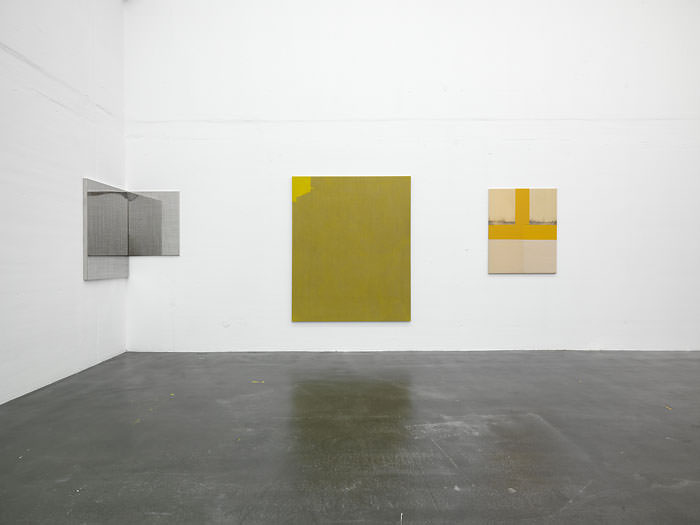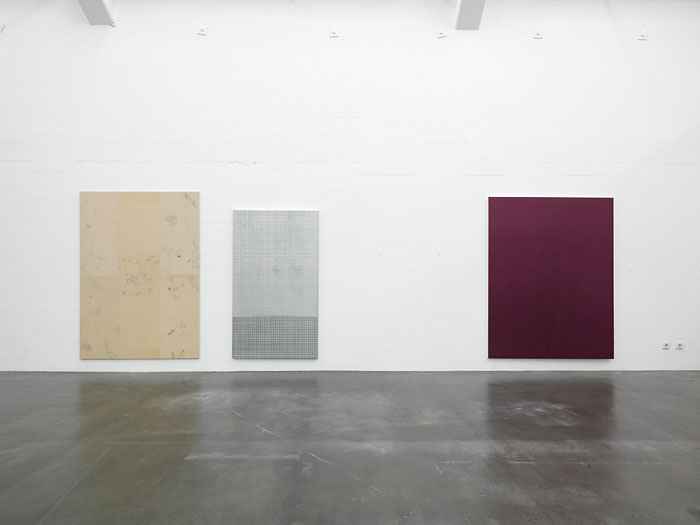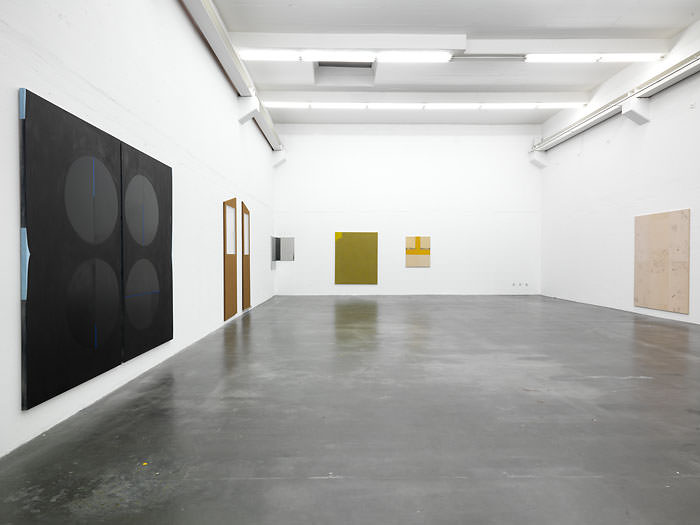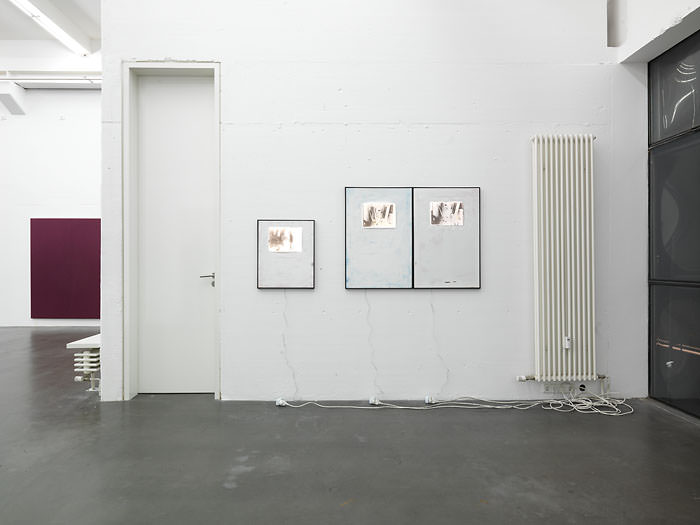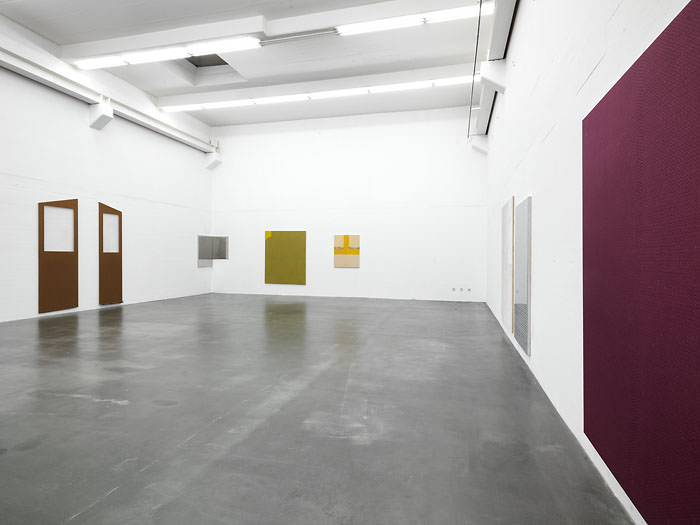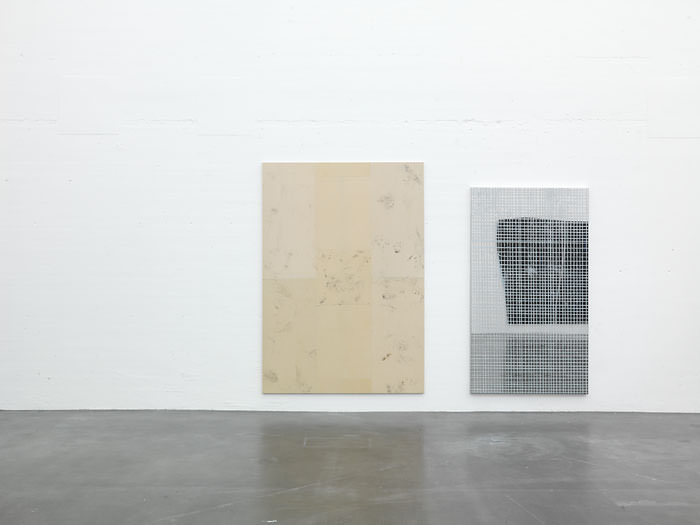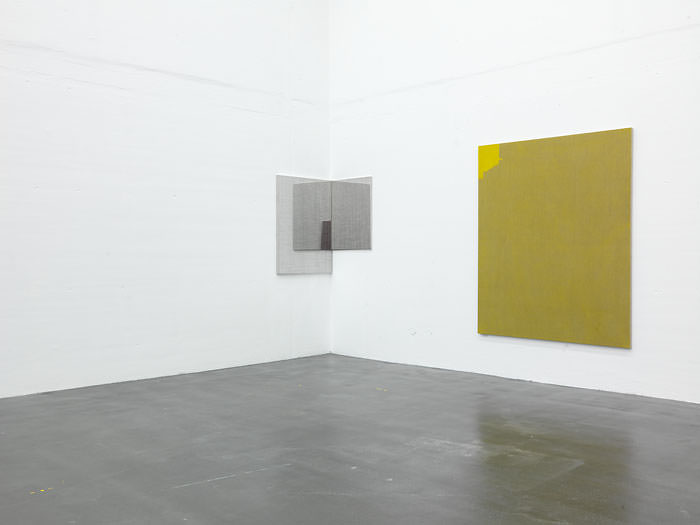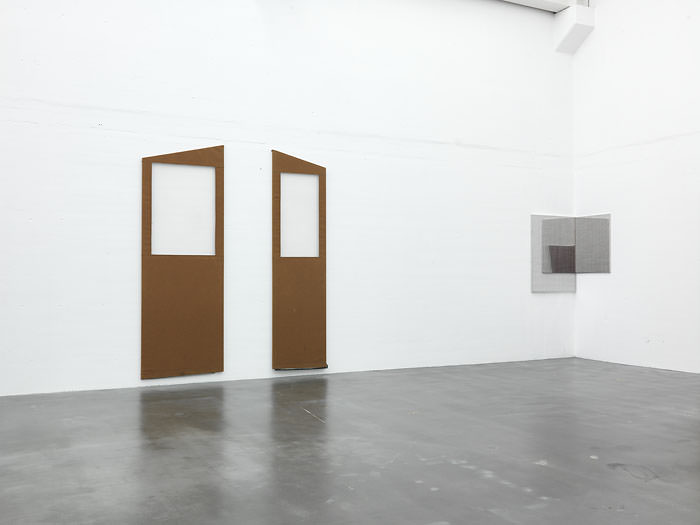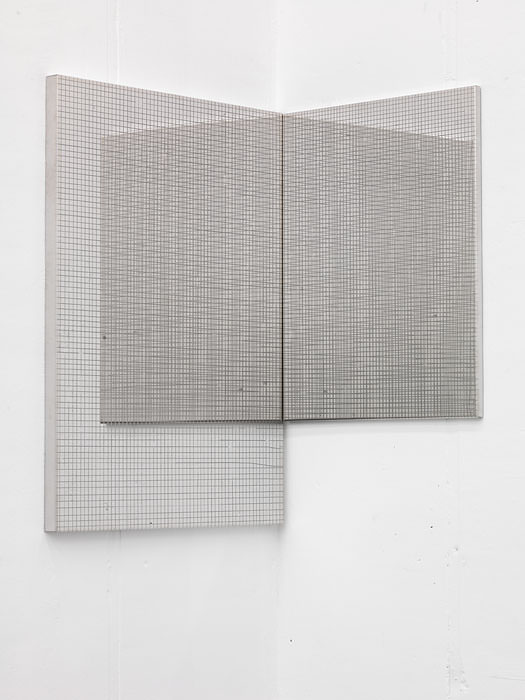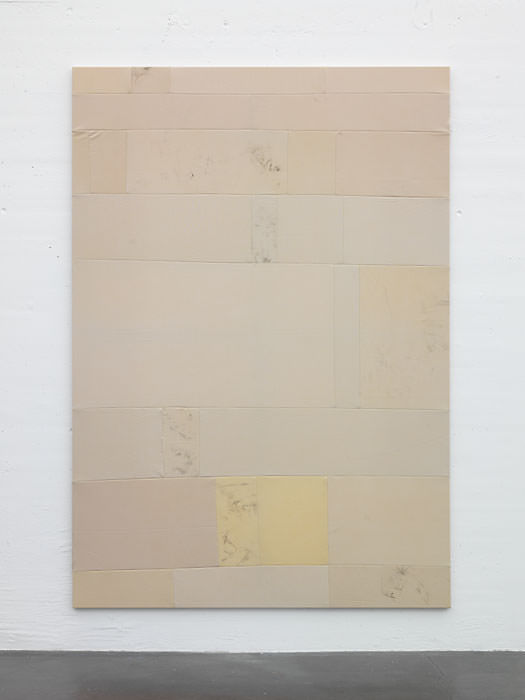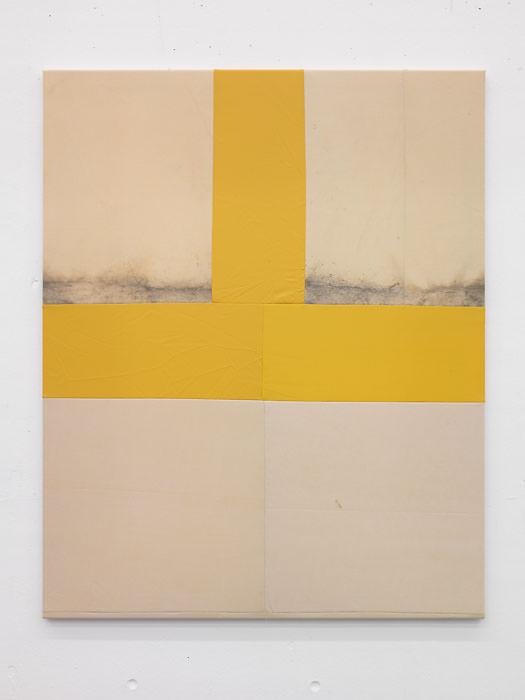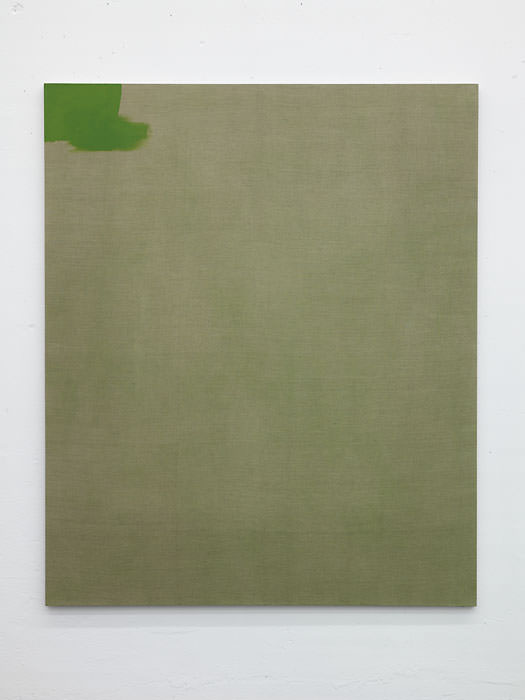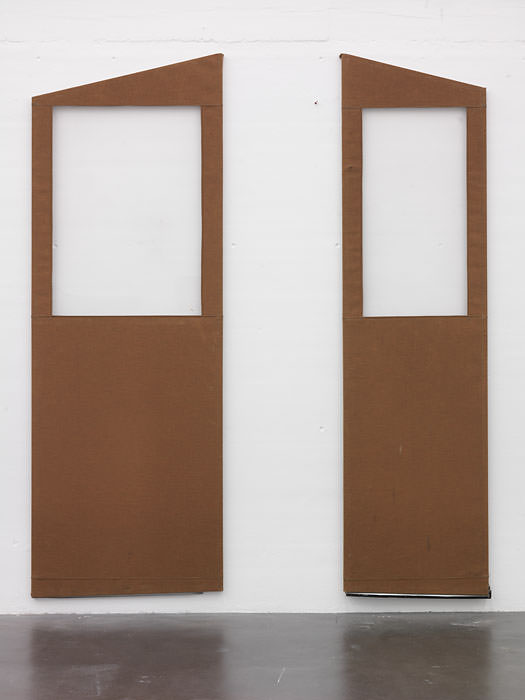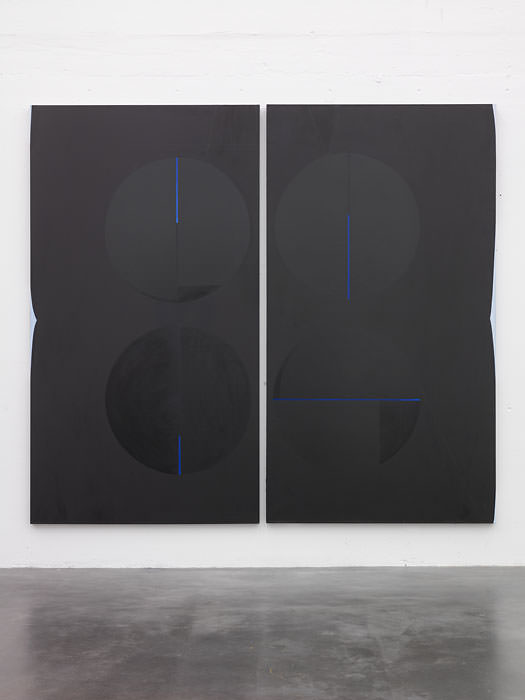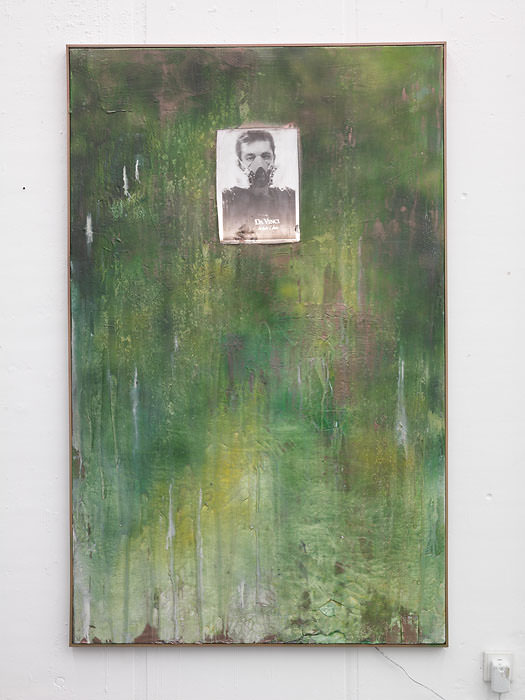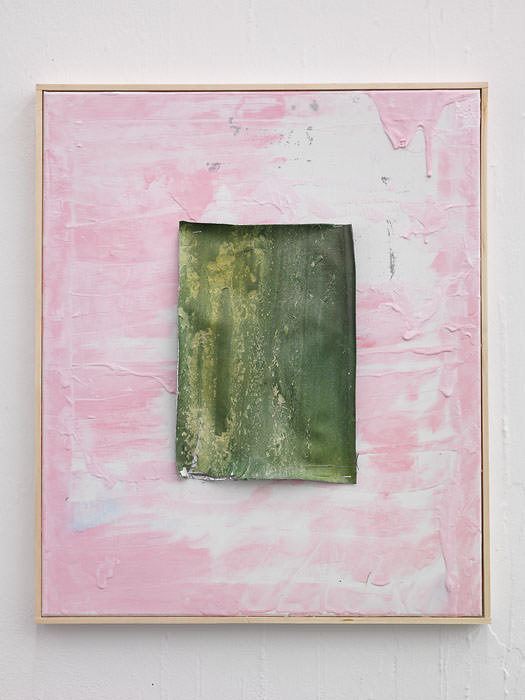exhibition text see below
Today painting has become less an expanded field, than a situational and discursive one, where a seemingly infinite array of materials and objects, not to mention combinations of, and variations on, the traditional components of painting—stretcher, canvas, paint, etc.—need only be placed in the space traditional to painting to be considered as such. This act of placing a material or object (conventionally stretched canvas or otherwise) vertically, parallel to the wall has become even more important than the materials and processes by which they are brought into that alignment. The operation is something like that of language, where a word takes on meaning only when placed in a certain part of the sentence, in relation to other words that give it the context of syntax, diction, tone, etc.
This evaluation of both visual and bodily experience via materials and space has a precedent in work of the 1960s and 1970s, something well understood before the mid-‘60s, when dogmas hardened around different styles like Pop, Minimalism, Color Field painting, etc. This dialogue included not only the materialist investigations of artists like Donald Judd, Carl Andre, and Robert Morris, but also the lesser known, but equally significant at the time, optically oriented paintings and sculpture of artists like Larry Bell, Mary Corse, and Bridget Riley. In each case, as with the younger generation, all the artists shared an interest in exploring the nature of perception, even as they used diverse means to do so. As this exhibition makes a visual case for, this dual conversation between reduced forms and mute materials and the bodily and visual response of the viewer is still relevant today in light of the broader context of rapid technological change, extending to touch practically every aspect of both our everyday and professional lives.
Alex Bacon
